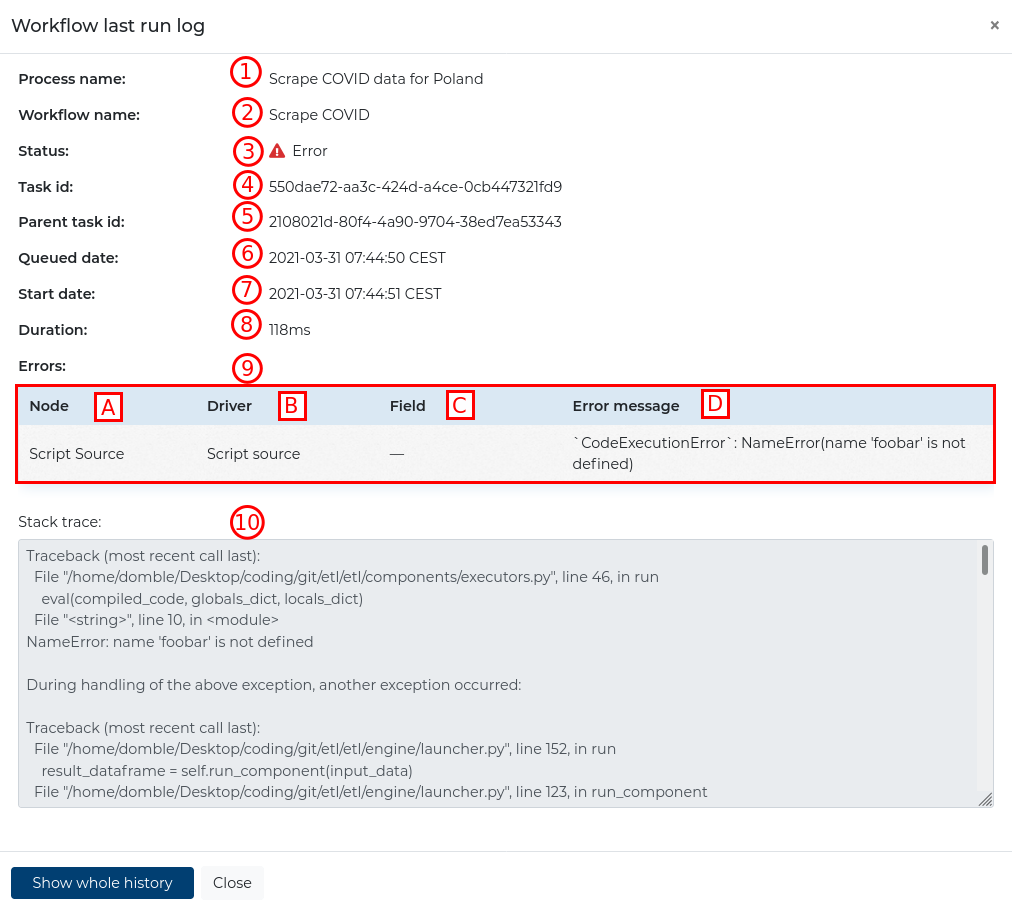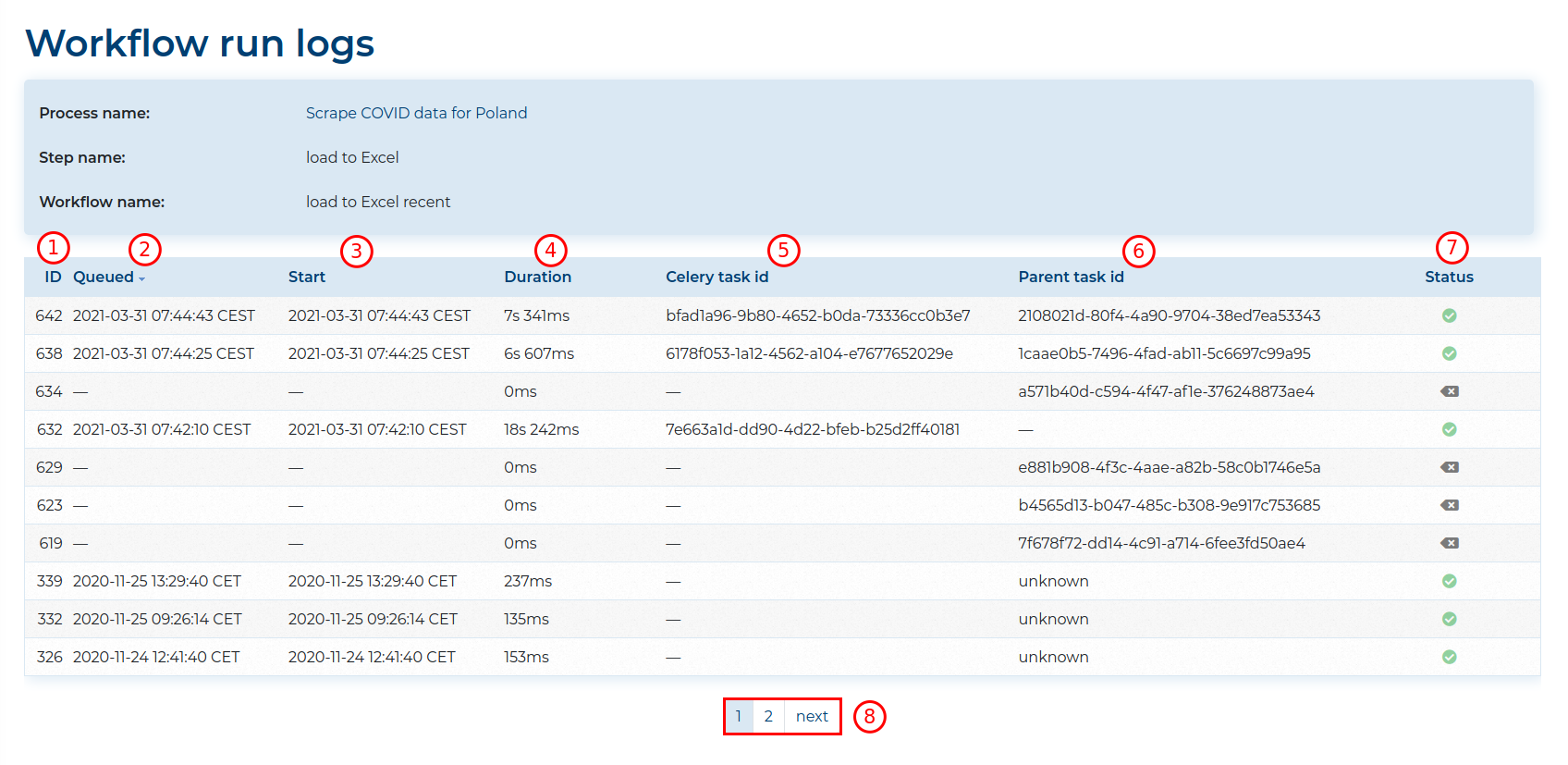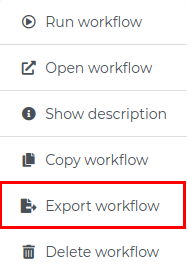Workflows #
Workflows are tasks that manipulate data by transforming it and moving to a specified target (e.g. different database or a file). A Workflow must have a valid structure.
The structure validation happens in the Modeler, where you connect various Components with each other. A valid structure is one that has at least one Data Source and one Data Target. All Components need to have a correct number of inputs and outputs and all must be correctly configured (i.e. have correct columns mapped for the Join Transformation, the Excel source has a valid sheet name chosen, etc.)
Workflow run logs #
When you click the small Status icon in the upper right corner of the Workflow, a popup for the Workflow run log will present details of the latest log entry:
- the name of the Process in which this Workflow is used,
- the name of this Workflow,
- the Status of the last execution,
- the Task id ,
- the Parent task id,
- when the Workflow entered the queue to be run,
- the date this Workflow was last executed,
- the Duration how long this Workflow has been running; only available if the Workflow
Status is
SUCCESSorERROR, - a table of errors that occurred during the execution (if there were any):
- the Stack trace generated by the error (if there was any).

Clicking the Show whole history button will navigate you to the list of all of this Workflow’s logs. At the top you will see the name of the Process in which this Workflow is used, the step it is used in and the name of this Workflow. There you will see a list of all logs of previous Workflow executions. Each element on the list consists of:
- its ID,
- the date it has been queued to be run,
- its start date,
- its duration (only available if the Workflow Status is
SUCCESSorERROR), - the Celery task id the log refers to,
- the Celery parent task id the log refers to,
- its Status; click it to view the log details.
At the bottom you will find navigation tools (8) if there are more recorded logs.

Export Workflows #
You can export Workflows by clicking Export Workflow in the Workflow actions
(accessible by clicking the ![]() icon on the Workflow).
icon on the Workflow).
![]()

This will navigate you to the Export Workflow section where you need to provide:
- a Filename for the exported Workflow,
- a Password for the file (Optional),
- additional options:
- whether to include in the exported file the Predefined Data Sources used in the modifier,
- whether to include in the exported file the Predefined Data Targets used in the modifier,

All exported Predefined Data Sources and Predefined Data Targets include database and usernames as well as passwords!
Only the user with the
predef_target_managementandpredef_source_managementpermissions (respectively) or theadministrationpermission can include Predefined Sources and Targets!
After clicking the Check content button, you will be navigated to a view where you
will see all the Predefined Data Sources and
Predefined Data Targets that will be
included in the export (if Include predefined targets and/or Include predefined sources
was checked).
Clicking the Cancel button will return you to the Export Workflow section.
By clicking the Save button, you will download a file containing the exported Workflow. The file can be then imported to any Process.